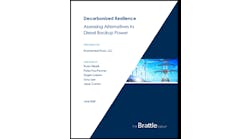Top 4 Things to Look for in an Evolved Data Center
In this week’s edition of Voices of the Industry, Tom Doherty, Chief Operating Officer at Aligned Data Centers explains four key features of the evolved data center.
Tom Doherty, COO, Aligned Data Centers
Three trends have shaped IT as we know it: consumption-based pricing models are growing in popularity; data center infrastructure and energy costs are rising while IT infrastructure costs are falling; and the demand for IT capacity is exponentially increasing.
Yet the data center – the foundation for our digital world – hasn’t evolved. It should, and it can.
What does an evolved data center look like? Broadly, it’s a data center that rationalizes costs with modern power and cooling infrastructure. It’s a data center that is aligned with the needs of the business and its environment. It’s a data center that is flexible, so the infrastructure can scale to meet IT demand today and tomorrow. And it’s a data center that is consumed on a pay-for-use basis.
The evolved data center model has four features you can’t ignore.
- Reliability and efficiency can co-exist – You do not need to sacrifice efficiency to have redundancy. The evolved data center can deliver 100 percent uptime while reducing energy consumption and cutting cost. How? By using the latest conductive cooling infrastructure and advanced data center infrastructure management (DCIM) software.
- Supply and demand are aligned – Most data center providers will require you to commit, upfront, for power that you will use over a 5- or 10-year period (and sometimes longer). But in a world where technology change is constant and IT innovation is a daily occurrence, forecasting a data center power requirement even two years into the future is nearly impossible. You no longer need to over-provision in an effort to mitigate risk. With an evolved data center model, data center capacity can be deployed just-in-time and in increments that match demand.
- Power densities can scale within your existing footprint – There is no need to move out of your data center to support your new power hungry IT gear. Sophisticated cooling technology enables you to deploy variable densities within the same row so you can have a low-density rack right next to a high-density rack. The evolved data center is future-proof.
- Pay for what you use – Most “as-a-service” offerings today are priced on a consumption basis, meaning you pay for what you use. And yet, the traditional approach to paying for the data center is based on an antiquated real-estate paradigm of paying for space. Some progressive data center providers charge based on the power consumed, but still require the customer to “ramp into” a power commitment that they make upfront. Look for a provider that allows you to visualize your power allocation and usage, and won’t penalize you if you use less than you commit to in your contract.
With the evolved data center model enterprises, service providers and governments can do more while using less. Today’s data centers should be engineered to reduce waste while improving reliability. They should support variable densities up to 25kW per rack. And with a global supply chain in place, data center providers should enable you to scale just-in-time, in increments that match the demands of your business.
Most of all, look for consumption-based pricing, so you only pay for what you use. The evolved data center model can give you the flexibility and control you need so you can better align your data center to the demands of your business.
Aligned Data Center offers an evolved approach which eliminates the need to forecast future IT demand and provides control over power and space consumption independently. We are excited to offer our clients the flexibility and efficiency they need to succeed in the Internet of Things era. – Tom Doherty
Tom Doherty is the chief operating officer of Aligned Data Centers. To learn more about the evolved data center model, read the Aligned Data Centers Insight Report.





